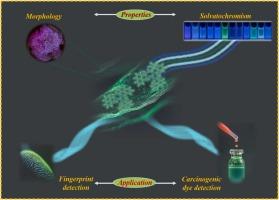A Solvatochromic Aluminum-1,8-Naphthalimide Complex 2D Nanostructure as a Versatile Probe for Sudan III Detection and Forensic Analysis
IF 8
1区 化学
Q1 CHEMISTRY, ANALYTICAL
引用次数: 0
Abstract
This study focuses on the development of a 2D nanostructure-based aluminum complex with 1,8-naphthalimide (Al-Nap) that exhibits negative solvatochromism and bright green fluorescence, emitting around 500 nm when excited at 390 nm. The Al-Nap complex was applied for the detection of Sudan III dye, a potential Class III carcinogen still illegally used in cosmetics and food, with a detection limit of 11 nM and a linear range of 100 nM to 250 µM. The quenching of fluorescence is driven by a distinct interaction between Al-Nap NSs and Sudan III, primarily due to the Inner Filter Effect (IFE) followed by the reduction of Sudan III. Importantly, the Al-Nap complex also functions as a reductase, catalyzing the Sudan III into its reduced form, which further enhances the quenching effect. This dual functionality not only facilitates highly sensitive detection but also underscores the versatility of the Al-Nap complex in chemical sensing. Additionally, the derived fluorescent powder shows promise in latent fingerprint detection, highlighting its potential for advanced fluorescence-based sensors in both chemical sensing and forensic analysis.

溶解变色的 1,8-萘二甲酰亚胺铝络合物二维纳米结构作为苏丹 III 检测和法医分析的多功能探针
本文章由计算机程序翻译,如有差异,请以英文原文为准。
求助全文
约1分钟内获得全文
求助全文
来源期刊

Sensors and Actuators B: Chemical
工程技术-电化学
CiteScore
14.60
自引率
11.90%
发文量
1776
审稿时长
3.2 months
期刊介绍:
Sensors & Actuators, B: Chemical is an international journal focused on the research and development of chemical transducers. It covers chemical sensors and biosensors, chemical actuators, and analytical microsystems. The journal is interdisciplinary, aiming to publish original works showcasing substantial advancements beyond the current state of the art in these fields, with practical applicability to solving meaningful analytical problems. Review articles are accepted by invitation from an Editor of the journal.
 求助内容:
求助内容: 应助结果提醒方式:
应助结果提醒方式:


